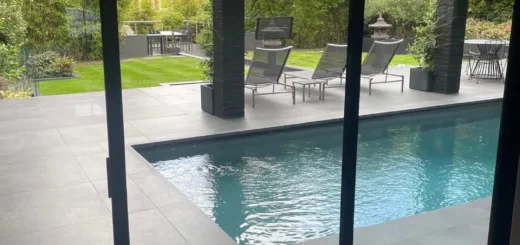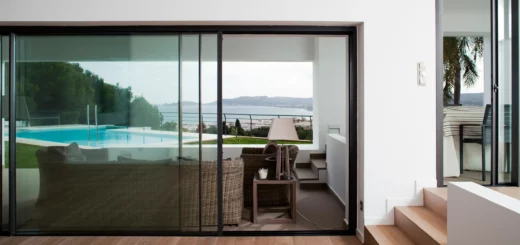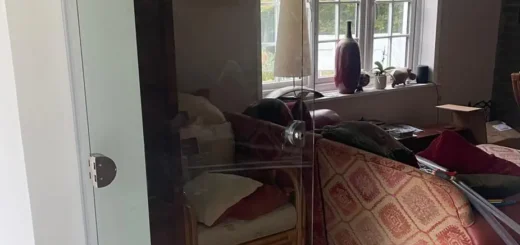Extension Sliding Doors: A Room-by-Room Guide
Table of Contents
Modern extensions demand careful thought about how to join your new space with the outdoors. The right doors can make a big difference to both the practical use and visual impact of your extension.
Kitchen Extension Sliding Doors
Glass doors have become a cornerstone of kitchen extensions, opening up cooking and dining spaces to patios and gardens. Slim framed kitchen extension sliding doors create bright, airy rooms that work brilliantly for everyday life and entertaining alike.
Corner Systems for L-Shaped Extensions
L-shaped kitchen extensions offer unique opportunities for eye-catching door layouts. Post-free corner systems allow two sets of extension sliding doors to meet at right angles, doing away with bulky frames that would block the view. The panels glide apart from the corner, revealing a completely open space that connects your kitchen directly to two different areas of your garden.
Street-Facing Kitchen Privacy
Front-facing kitchen extensions need a careful balance of light and privacy. Extension patio doors with smart glass can switch from clear to opaque at the touch of a button, giving you control over who can see in. Positioning your slide doors at an angle to the street helps maintain privacy while still letting in plenty of natural light.
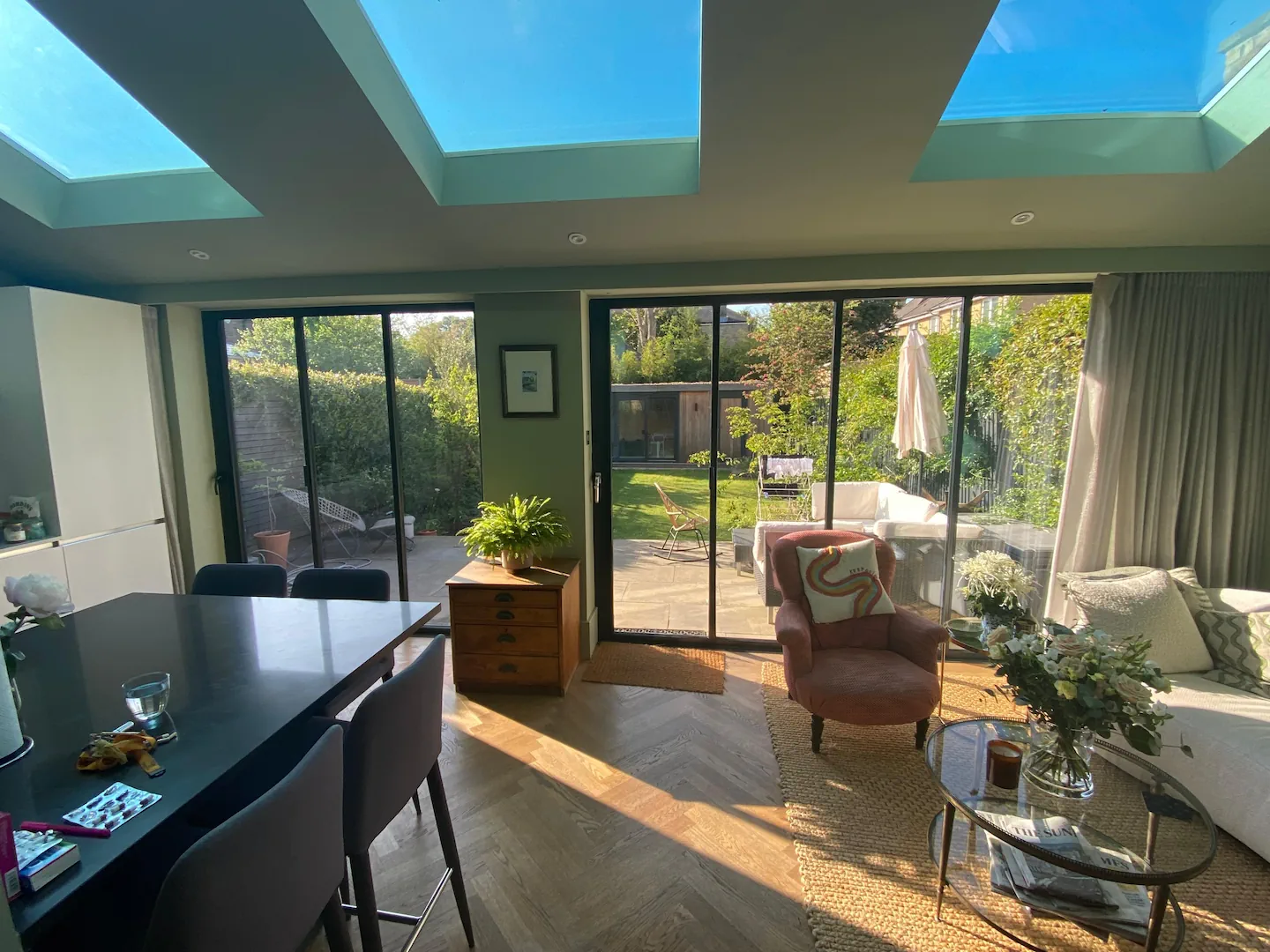
North-Facing Kitchen Light
North-facing extensions often struggle with darkness, but thoughtfully placed glass kitchen doors can brighten even the dimmest spaces. Wide door panels maximise the amount of sky visible from inside, while flush threshold installation removes any visual barriers between internal and external floor levels.
Opting for extra-clear glass with minimal iron content allows more light to pass through the panels.
Combining sliding doors with roof glazing multiplies the amount of natural light reaching your kitchen workspace. Strategic placement of both elements helps create pools of brightness exactly where you need them most – over prep areas, dining spaces, or living zones.
Living Room Extension Sliding Doors
Bringing natural light into your living space requires careful planning around sight lines, seasonal changes, and the specific layout of your extension. Extension sliding doors help strike the right balance between openness and comfort throughout the changing seasons.
Sight Line Planning
Smart positioning of extension sliding doors shapes how you experience your garden from different points in the room. Metal sliding doors with slim frames draw your eye outward by creating clean, geometric lines that frame specific views. Rather than placing doors centrally, consider offsetting them to capture the most striking parts of your outdoor space – whether that’s mature trees, water features, or architectural elements.
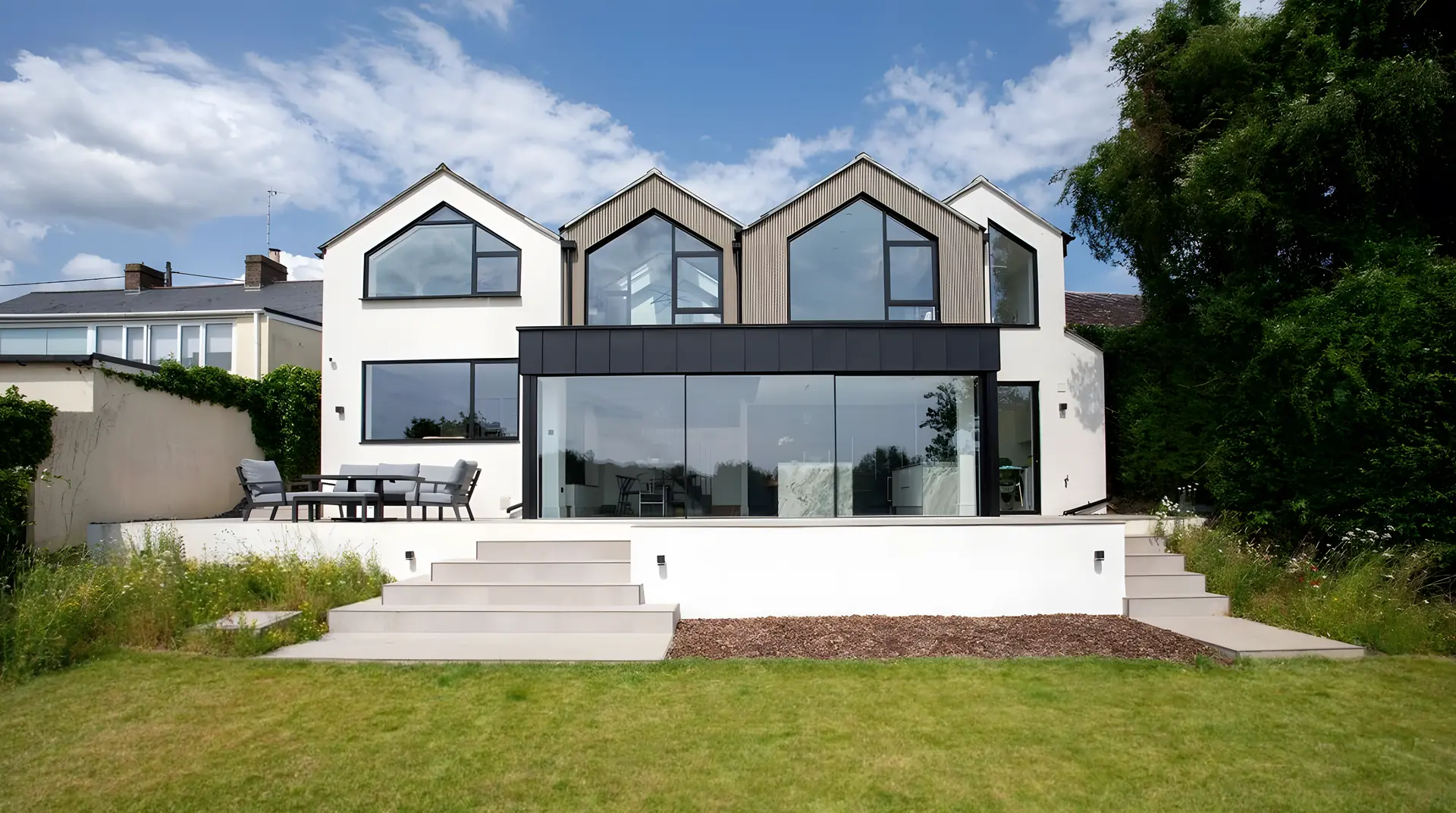
Taller panels invite your gaze upward to take in tree canopies and sky, while lower heights might better suit a sloping garden or help maintain privacy. Extension sliding doors positioned to align with internal features like fireplaces or shelving create natural focal points that work in every season.
Seasonal Placement of Extension Sliding Doors
Morning sun streaming through poorly positioned doors can make your living space uncomfortably bright and warm. Extension patio doors on east-facing walls need external shading or careful glass specification to prevent overheating. South-facing doors benefit from deep overhangs that block high summer sun while allowing winter rays to penetrate deeper into the room.
Glass choice matters more than many realise. Solar control coatings cut heat gain without darkening the glass, keeping your room comfortable year-round. The coating’s effectiveness varies based on which way your doors face – north-facing installations often skip this treatment to avoid reducing valuable light.
Small Space Design
Limited square footage demands creative approaches to door placement. Sliding doors for extensions work particularly well in compact spaces because the panels stack neatly without swinging into the room. Uninterrupted views through large glass panels trick the eye into perceiving more space, making even the smallest extension feel generous.
Door positioning should work with your intended furniture arrangement. Allow enough wall space for seating while keeping main walkways clear of sliding panel tracks. Built-in furniture near the doors can provide useful storage without blocking light or movement.
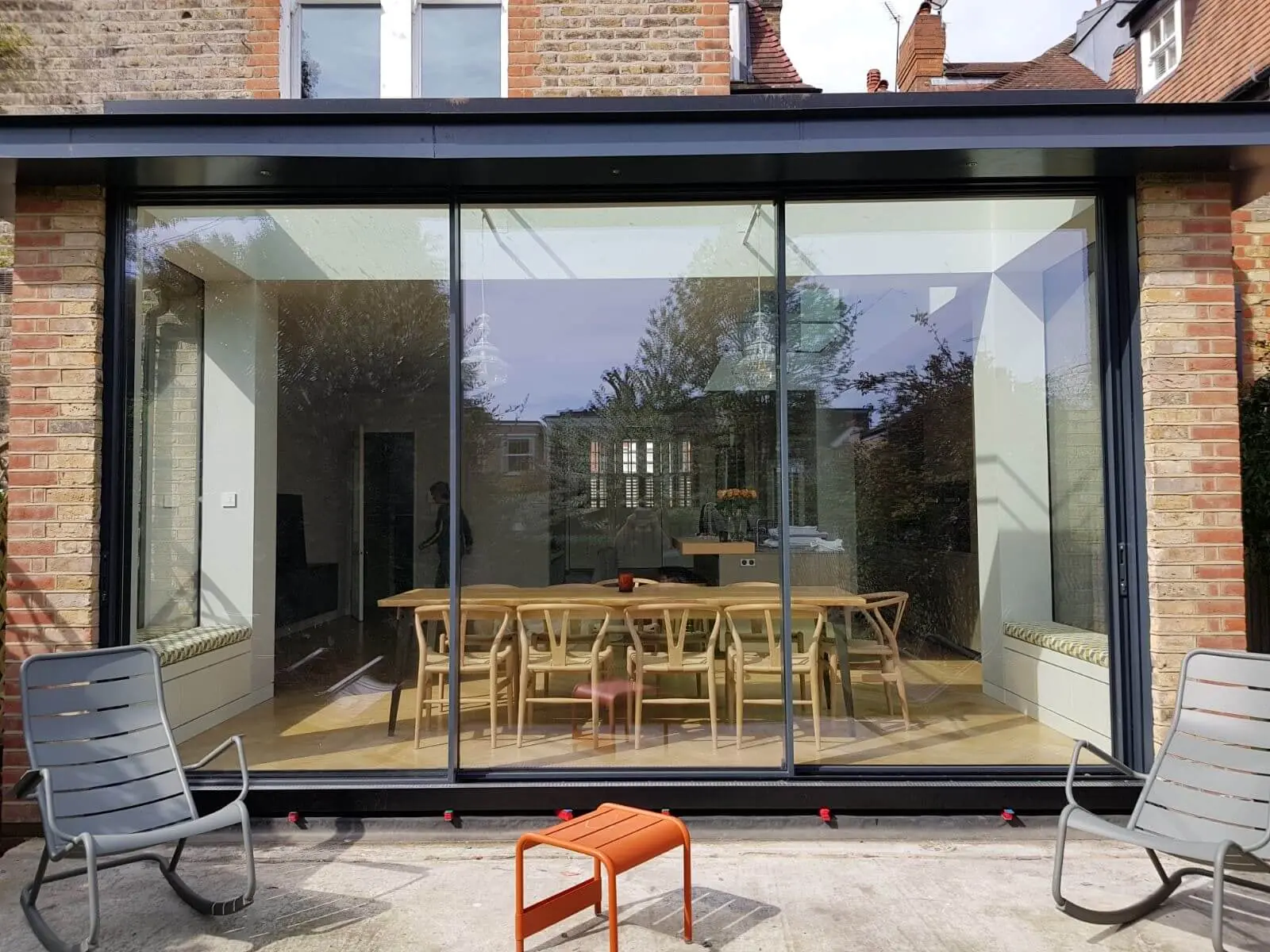
Visual Extension Techniques for Extension Sliding Doors
Strategic door placement combined with matching indoor and outdoor floor levels creates the illusion of a larger space. Running the same flooring material from inside to out strengthens this effect, especially when viewed through floor-to-ceiling glass. The key lies in reducing visual barriers – choosing minimal frame profiles and concealing tracks within the floor construction helps achieve a more spacious feel.
Light-coloured floor finishes near the doors reflect more daylight into the room’s depths. This brightness, coupled with the garden view, pulls your eye outward and makes the internal space feel more expansive. Positioning mirrors to capture and multiply these garden reflections adds another dimension to the sense of space.
Strategic lighting around your extension sliding doors helps maintain their space-expanding effect after dark. Well-placed external lights illuminate key garden features, preventing the glass from becoming a black mirror at night. Inside, lighting should be arranged to avoid reflections in the glass that could spoil your garden view.
Extension Sliding Doors for Garden Rooms
Garden room extensions need careful thought about year-round usability and plant care. The right glass configuration keeps your space warm in winter while preventing overheating in summer.
Full-Width Systems
Large 3 panel sliding doors spanning an entire wall are a great way to create stunning open views of your garden. Moving panels stack neatly to one side, opening up more than two-thirds of the wall space. This arrangement works particularly well for garden rooms where you want to grow plants that need plenty of natural light.
Extension sliding doors with slim sightlines allow maximum light penetration even when closed. The reduced frame profiles prove especially valuable in garden rooms where every ray of sunlight counts for plant growth. Positioning taller or climbing plants near the glass takes advantage of the vertical space while creating a natural privacy screen.
During colder months, modern glass sliding doors help maintain stable temperatures through advanced thermal breaks and multi-point locking. Your extension stays cosy enough for winter gardening without excessive heating costs. Smart glass specifications balance heat retention with solar gain, keeping your garden room comfortable through changing seasons.
Indoor Garden Zones
Extension patio doors can divide your garden room into distinct climate zones. Moving panels let you isolate areas for humidity-loving plants while keeping other spaces drier. This zoning capability proves invaluable when growing plants with different environmental needs in the same space.
Sliding doors for extensions offer flexibility in managing airflow. Partial opening of panels creates gentle air movement that helps prevent fungal issues common in enclosed garden spaces. The ability to adjust ventilation precisely helps maintain ideal growing conditions for different plant species.
Temperature Control
Strategic placement of extension sliding doors relative to the sun’s path helps regulate temperatures naturally. Eastern exposure gives plants morning sun while avoiding afternoon heat, while northern aspects provide consistent indirect light ideal for shade-loving species. Multiple door sets facing different directions allow precise control over light levels and heat throughout the day.
Plant-Friendly Features
Low threshold designs prevent water damage when watering plants or dealing with spillage. Drainage channels built into the frame system direct water away from sensitive components, while marine-grade materials resist corrosion from constant moisture exposure. This robust construction ensures your doors continue working smoothly despite the damp conditions typical in garden rooms.
Glass specifications matter more in plant-growing spaces than standard living areas. UV-transmitting glass options allow beneficial ultraviolet light through while blocking harmful infrared rays. This selective transmission supports healthy plant growth without creating excessive heat buildup.
The track system needs extra attention in garden room settings. Debris guards prevent soil and plant matter from interfering with smooth operation, while regular cleaning channels make maintenance straightforward. Choosing the right combination of practical features keeps your doors working reliably in challenging conditions.
Extension Sliding Doors for Side Returns
Side return extensions present unique opportunities despite their limited width. Extension sliding doors can open up these narrow spaces to create bright, welcoming areas that feel connected to the rest of your home.
Working with Narrow Spaces
Narrow openings demand precise planning to avoid wasted space. Extension sliding doors that stack in parallel rather than folding back work well in tight side passages, preserving valuable wall space for storage or artwork. Panels gliding smoothly behind one another need less clearance than other door types, making them ideal for restricted spaces.
The width of your door frames becomes especially important in side returns. Heavy frames eat into precious space, while minimal profiles preserve sight lines and help the space feel more open. Extension patio doors with ultra-slim frames can span openings as narrow as a metre while still operating smoothly.
Mounting hardware placement needs careful thought in restricted spaces. Recessed tracks sit flush with your flooring, removing trip hazards and visual barriers. Careful positioning of the running gear helps doors operate smoothly even in tight confines, while hidden guides keep the system stable without protruding into walkways.
Light Wells and Sliding Doors
Side returns often struggle with darkness due to neighbouring walls blocking natural light. Sliding doors for extensions work together with overhead glazing to brighten these spaces naturally. Strategic placement of glass panels beneath light wells creates bright spots that draw daylight deep into your home.
Light reflectance from surrounding surfaces plays a vital part in brightening side returns. Pale walls and ceilings bounce daylight around the space, while glossy finishes on your door frames add subtle reflections. Choosing the right glass specification helps transmit as much light as possible while maintaining comfortable temperatures.
Combining different types of glass in your extension sliding doors lets you balance various requirements. Low-iron glass in upper panels transmits more light, while toughened units at lower levels provide extra security. Privacy glass near neighbouring properties maintains good relations without sacrificing natural brightness.
About SunSeeker Doors
With over 20 years of experience, SunSeeker Doors remains at the forefront of door design with our quality-tested patio doors and related products, including the bespoke UltraSlim aluminium slide and pivot door system, Frameless Glass Doors, and Slimline Sliding Glass Doors. All of our doors are suitable for both internal and external use.
To request a free quotation, please use our online form. You may also contact 01582 492730, or email info@sunseekerdoors.co.uk if you have any questions.


